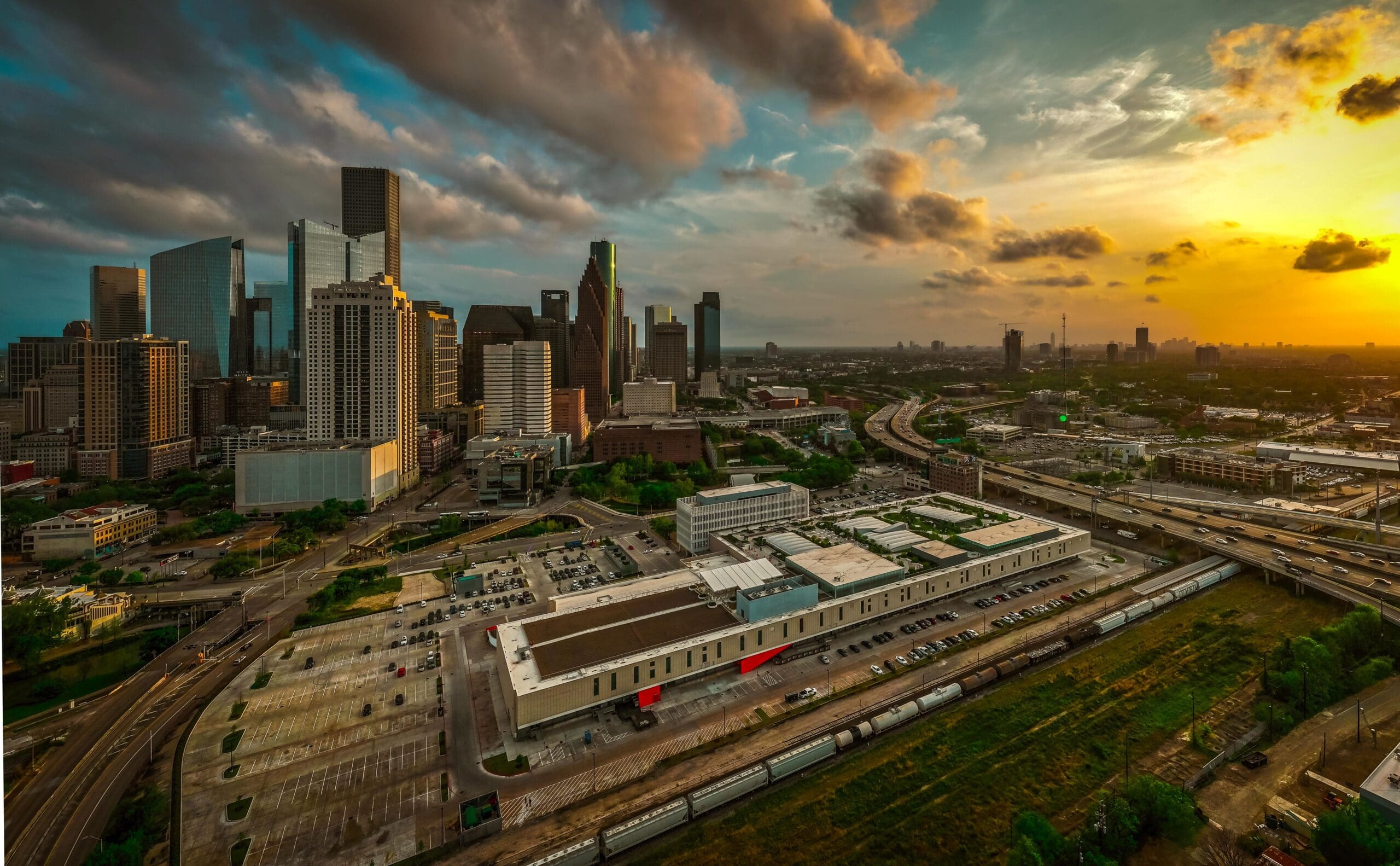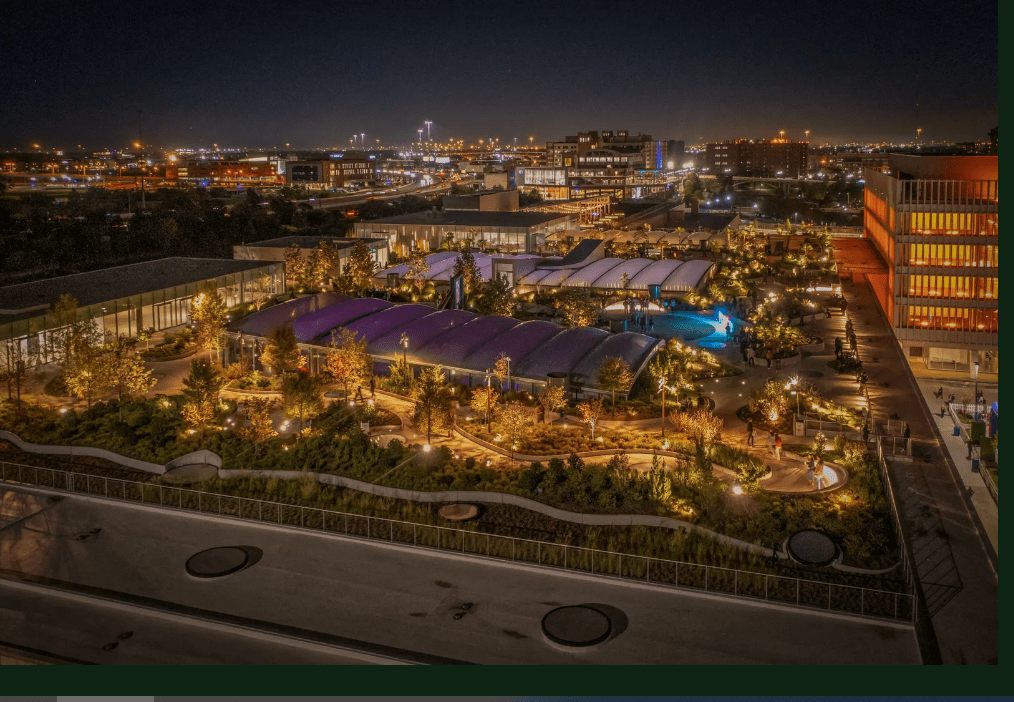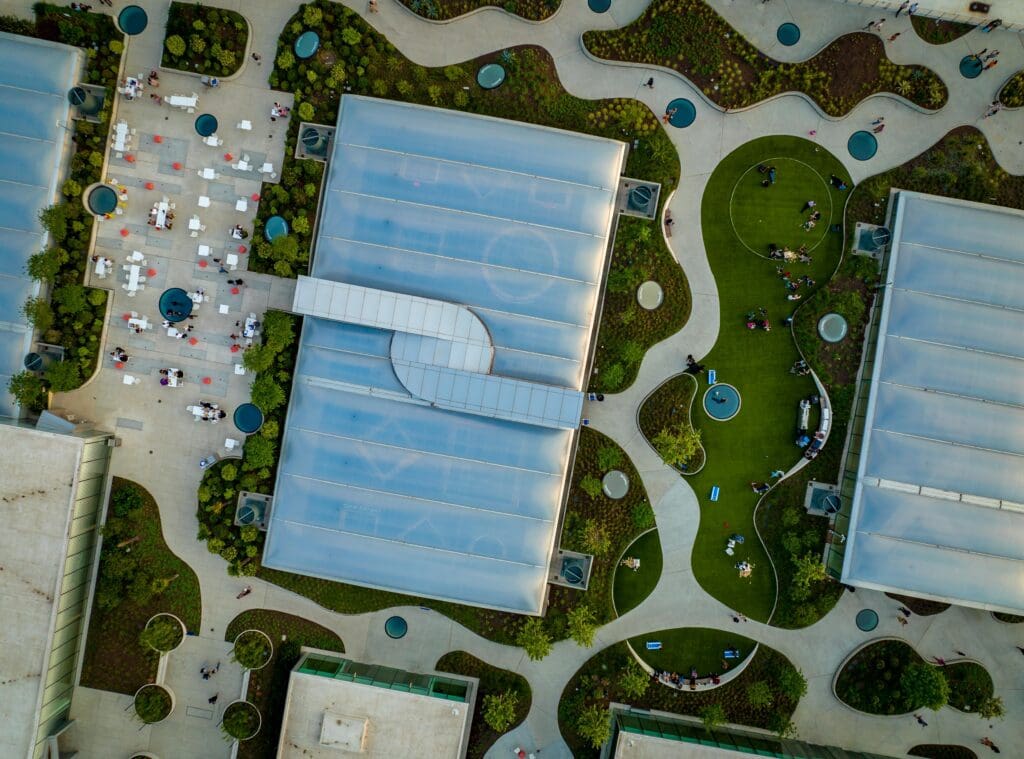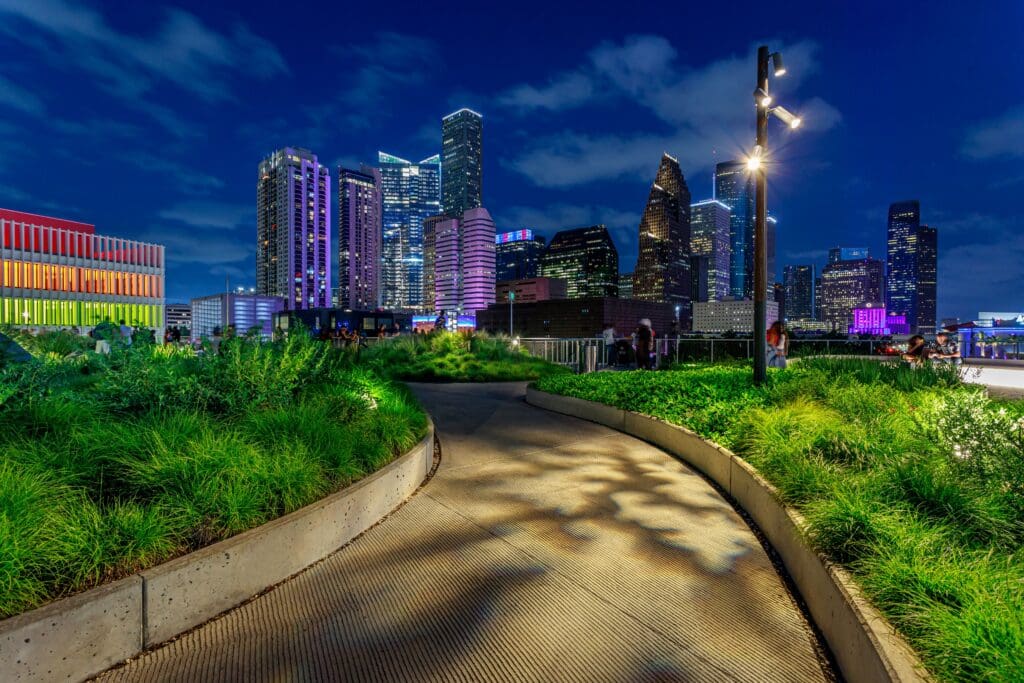
For many years, this grand site was home to the USPS headquarters for Houston, Texas. However, in 2015, the building was decommissioned and sold to commercial developers, causing it to sit empty until 2020. During that time, plans were made to rejuvenate the five-acre property and create a place where the community could come together and enjoy food, culture, and social activities. With the unique structure of the building, the planners sought to retain the historical structure while looking to the future.
Among the plans was a rooftop park that all could enjoy, so the developers worked with Ruppert Landscape to install this challenging project, which won a 2023 Gold Award of Excellence.
“At Ruppert, we have high standards and work hard to deliver top-quality projects for our customers,” says Jack Jones, Houston branch manager. “Winning an award among many outstanding projects is a significant honor for our team. It’s a reminder that quality and dedication to excellence are essential. It also makes our team proud and motivated to tackle the next project.”

From the beginning, the team focused on making a sustainable and functional space. In the event area, they installed a 6,500-square foot lawn that is lightweight and supports everything from yoga to concerts. And by using synthetic turf, they can eliminate potential leaking problems. They also added walking paths and thousands of native plants that are dispersed around the site. Getting all the materials on the roof was a significant challenge.
“We built most of this project on structure, which limited our access and the use of heavy equipment while leading us to focus on soil composition and weight,” Jones says. “We had to use a crane supplied by the general contractor to place the sky park materials.”
Since many groups were sharing the crane, close communication was vital to move such a large amount of material.
“We moved over 1,700 super sacks of lightweight soil and aggregates, along with 25,000 plants and shrubs,” Jones adds. “There were also 160 trees and other materials, like pavers, concrete seat walls, and precast planters. Once on the roof, we had to use gantry cranes, pallet jacks, Georgia buggies, and wheelbarrows to move and place heavy materials.”
With the historical nature of the building, extra steps were needed to inspect and approve the plans, even after the installation had begun.

“One of the historical agencies that were involved raised concerns about trees we’d installed along the outer edges of the rooftop,” Jones says. “They required that the new building design and landscape mirror the original look, which meant the green roof should not be seen from the ground level. This resulted in a redesign that required us to move several large trees from the rooftop and repurpose them at ground level.”
Another challenge was winter weather, which brought record-low temperatures to Houston.
“Around the midpoint of construction, Houston experienced one of the coldest winters on record, as temperatures fell to -2°F and remained below freezing for two weeks,” Jones says. “This created a lot of extra work, and we had to act quickly to protect plant material. We brought the materials not yet installed indoors and protected the installed plantings with blankets.”
Despite the extra protection, about $45,000 of plant material was lost, so the team coordinated with the landscape architect and owner to find hardy replacements that would add a tropical feel to the space.
For the rooftop gardens, nearly 100 varieties of native perennials and shrubs add pollinator habitat through xeriscaping. Visitors also get to explore three distinct ecosystems, including an arid garden, woodland, and tropical water garden. During the project, over 100 large caliper trees were installed to create microclimates and add relief from the heat. To make the planting efficient, the landscape architect laid out each plant while Ruppert employees planted behind him.

Irrigation was a vital part of the project as Ruppert sought to use water efficiently. Over 1.6 miles of dripline was installed to reduce run-off and evaporation. In addition, HDPE pipe connections were heated and fused to reduce leakage. This form of pipe fusing uses recyclable material and has strong freeze resistance. With such an extensive system, the team used GPS to map out the whole system and guide the team for future repairs or improvements.
As the project continued, over 300 people, including the subcontractors, worked onsite on a given day. To keep everyone organized, the team was divided into sections, with each crew working on a different section on different days or times. For example, Ruppert would spend the morning installing plants in section A, then move to section D to install soil in the afternoon.
For Jones and his team, POST Houston stood out for several reasons.
“This park was creatively designed to bring a modern urban green space to a historical building,” Jones says. “A lot of thought was put into sustainability, from creating pollinator habitat to conserving water resources, and it was a great team effort. It’s incredibly rewarding to contribute and see people enjoying the fantastic events and concerts.”
Interested in participating in the Awards of Excellence? Be sure to enter your projects when entries open in early 2025.

